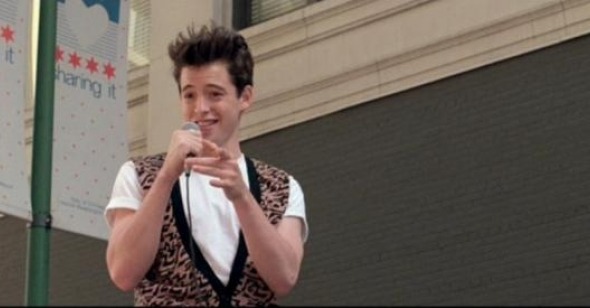Thanks for bearing with us. It’s been longer than usual since our last symposium, although we’re thrilled that we’ve managed to drastically increase the amount of new content in our recurring sections (interviews, reviews, retrospectives) over the last few months. Having decided to forgo our annual year-end “issue” in favor of a more streamlined retrospective of the endlessly bountiful movie slop trough of 2006 via our best-of-the-year poll, our always controversial 11 Offenses article, and our annual But What About column, we bounded over winter and headed right for spring. So, sorry for the delay, but we’re now proud to present Reverse Shot: On Demand, featuring a little self-examination—this new symposium represents an attempt to figure out what it means to watch movies through our very particular lens. Assuming of course, that “our lens” bears any weight at all
Much has been made in our own writings and elsewhere (at times to the ire of some elder statesmen of film criticism) about the general age of the writers of Reverse Shot. Though this, happily, does not apply to all of us, we generally fall somewhere between 26 and 32. We’ve also noticed some crucial disparities in our collective disposition towards certain films—United 93 springs to mind. But are these two things related? Are we merely “diaper dandies” (thanks, David Poland!) rattling sabers to grab the attention of the establishment? Or is there something to the way we grew up with movies that results in a different way of looking at them? (Note: this is not about flattering ourselves—our tastes may be no better, and in many cases no different than the body of writers who fell similarly in love with L’Enfant, The Death of Mr. Lazarescu). If each film “generation” has its own particular point of view, as surely, drastically, the next one will, then what is ours? And how does it aid/impede us?
One obvious answer, the depths of which haven’t been plumbed enough in our film culture, is that most of us came of age as cinephiles in the era of home video. In our early years, films for us weren’t hallowed objects writ large on movie palace screens, or even out-of-the-way art houses—they were cramped onto TV screens, played on VCRs, wrenched away from their “proper” place of worship. Yet this didn’t change the value they held for us. Additionally, and perhaps more importantly, we were the first generation that had access to a wide array of movies all of the time. Odds are we don’t remember posters from our childhood, but video boxes. (Are films categorized more in our heads by video store “sections” than genres?) And as a result, we watched, a lot, and over and over, making us the first on-demand generation. The advances of DVD are only a natural extension—forget all the whining about the death of foreign film. There has never been a better time to be a movie lover, and we’re uniquely positioned to capitalize.
As a way of getting at this big complex idea, we asked our writers to pick a film that they’ve seen many, many times, across different periods of their lives, as a jumping-off point. Perhaps that one film watched more times than any other—something obsessed over in childhood, adolescence, or even repeatedly viewed for the purposes of a university term paper. If watched again through this particular conceptual rubric, how does that affect its properties? What’s changed over time? And from these collective writings, can any assumptions about this generation be drawn?
Naturally, the resulting pieces encompassed even more than we expected, from appreciations of John Hughes teenage culture to a reappraisal of Wayne’s World as arbiter of early nineties corporate interests to situating Cronenberg’s Videodrome within the epochal video and cable revolutions of the late Seventies and early Eighties. As with all Reverse Shot symposia, we didn’t know what we were gonna come up with, but we hope, as usual, it’s more than enough to open up a debate and consideration of the various ways in which film is viewed and assessed.
